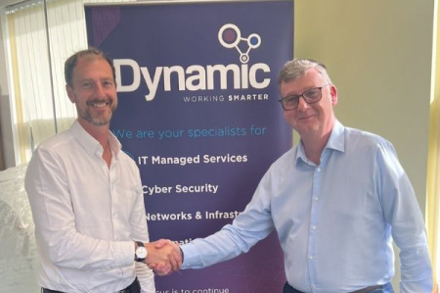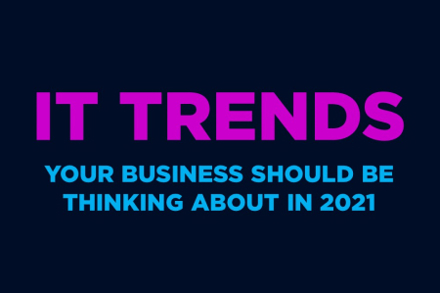Businesses must quickly adjust to the fast-changing digital landscape of today or risk falling behind. In the centre of this change is the idea of IT ecosystems. The way business’s function, interact, and expand is being completely transformed by these interconnected networks of hardware, software, data, and services. As digital innovation continues to reshape industries, understanding the importance of IT ecosystems has never been more critical.
What is an IT Ecosystem?
It’s a big buzzword today, but it’s not a new concept. An IT ecosystem refers to a network of interconnected services and components in the information technology industry.
Essentially, IT ecosystems are product platforms defined by core components made by the platform owner and complemented by applications made by autonomous companies in the periphery. These ecosystems offer solutions comprising a larger system of use than the original platform owner created and solve important technical problems within an industry. In successful technology ecosystems, it is easy to connect to or build upon the core solution in order to expand the system of use and allow new and even unanticipated end uses. The core firm's product has important but limited value when used alone but substantially increases in value when used with complementary applications.
It incorporates the complex web of digital components that work together to support and drive an organization’s operations. Think of it as a vibrant network where every piece - from cloud services and mobile applications to data analytics and cybersecurity - interacts in real-time to deliver seamless services.
So, how do you build an It Ecosystem?
Building an IT ecosystem is about creating an interconnected environment where everything works together seamlessly. By doing this, organizations can unlock a range of benefits, from improved efficiency and collaboration to enhanced customer experiences.
Adopt a Collaborative Mindset - Promote cross-departmental cooperation and make sure every team member is aligned and working towards a typical goal.
Invest in Scalable Solutions – Pick technologies that can evolve with your association. This is vital for maintaining the adaptability and responsiveness of your IT ecosystem over time.
Partner with Experts – Strong partnerships are a valuable tool. Collaborate with other businesses and technology providers which understand the local market dynamics to expand your ecosystem’s capabilities and offer tailored solutions to support your IT ecosystem. This can include integrating third-party services or co-developing new solutions, partnerships can also help you reach new customer segments and enhance your value proposition.
Focus on Security – As interconnectivity increases, so does the threat of cyber hazards, therefore it is essential to prioritize security and privacy. Protecting user data is paramount. Implement robust cybersecurity measures and comply with relevant regulations to build trust with your users. Regularly audit your systems for vulnerabilities and stay updated on the latest security practices.
Stay Informed and Adaptable – The digital landscape is ever-changing. Regularly review and update your IT ecosystem to incorporate emerging technologies and trends, confirming that your organization stays at the forefront of invention.
Maintenance is key. Once you have successfully built an IT ecosystem it is essential to maintain it. 85% of ecosystems collapse within three to seven years of their introduction. This illustrates the challenges and risks of sustaining successful IT ecosystems despite their potential for exceptional growth and profitability. Be sure to regularly update software and systems to maintain compatibility and performance and to ensure seamless integration of all digital tools and platforms.
Why businesses need an IT ecosystem.
Investing in a robust IT ecosystem is important because it helps businesses work better and faster. Here’s why they matter more than ever –
Enhanced Efficiency – by connecting different technologies and tools, companies can share information easily and improve their operations, making day-to-day tasks smoother and more efficient. A more streamlined processes reduces operational costs and improves the overall efficiency of the organization.
Improved Customer Experience – With real-time data and interconnected systems, businesses can deliver personalized experiences that meet the evolving needs of their customers. This, in turn, drives customer pleasure and devotion.
Innovation Driver – IT ecosystems foster an environment where innovation can flourish. By breaking down traditional barriers, organizations are better positioned to experiment with new technologies and business models and create new products and services.
Competitive Advantage – In an increasingly digital world, the ability to quickly adapt to market changes is a key differentiator. A well-integrated IT ecosystem provides organizations with the agility required to remain ahead of the competition.
The era of digital transformation is here, and IT ecosystems are at the centre of this revolution. Organizations can build resilient, future-proof IT ecosystems that drive growth and success. In a world where every click and connection matters, the ability to harness the full potential of IT ecosystems is more important than ever.
But creating and maintaining such an ecosystem involves more than just implementing the right technology. It requires a partner who can guide you through the complexities of integration, ensure smooth user adoption, and support continuous improvement. Dynamic Networks can help navigate this process. Get in touch now and see what we can do for your business.
Dynamic Insights & Advice

Hacking Horror Stories: Iconic hacks
From Facebook breaches to NHS ransomware, this blog unpacks major cyberattacks and how to protect yourself in 2025’s digital minefield.

Dynamic Networks Group Continues Its Expansion
Dynamic Networks Group continues its expansion with the acquisition of Peak Support Services Ltd, a Derbyshire based Cloud MSP.

Dynamic Networks completes a Management Buyout and commences its acquisition strategy
David Smith (CEO) and Gareth Leece (COO) have successfully completed an MBO of Dynamic Networks, working with Paul Landsman of Kingland Capital. The MBO provides for a simplification of the Board structure to allow for its continued accelerated growth strategy.

10 reasons to archive your business emails in the cloud
For most organisations, email has become an essential part of daily workflow and communications. However, many businesses are unaware of the importance of archiving their emails and having an email retention strategy.

Planning a successful migration to the cloud
Moving to the cloud comes with multiple benefits. For most businesses, it usually means reducing running costs, faster modernisation capabilities and increased security.

2021 IT trends your business should be thinking about
Here are our top IT trends and predictions your business should be thinking about now to prepare for 2021.


